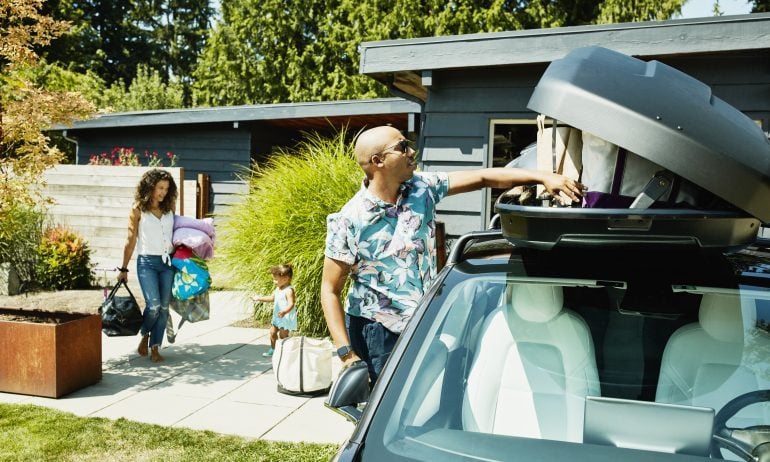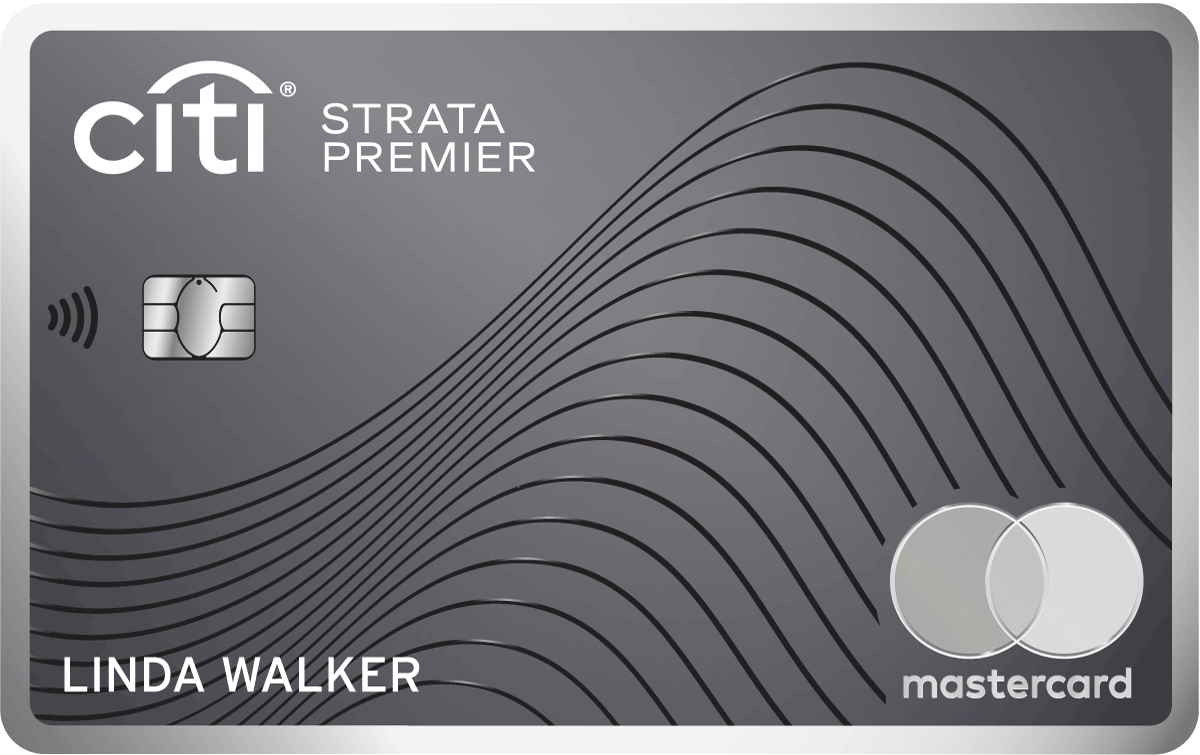Travel Inflation Report: October 2025
Travel prices overall are flat compared to this time last year, although airfares and dining costs are on the rise.

Many or all of the products on this page are from partners who compensate us when you click to or take an action on their website, but this does not influence our evaluations or ratings. Our opinions are our own.
Overall travel costs are up year-over-year for the first time since February 2025. That's largely driven by a 3.2% rise in airfare costs and a more modest decrease in lodging costs compared to what we've seen the past few months.
Average U.S. travel costs are 2% higher compared to this time in 2024, according to NerdWallet's Travel Price Index, which combines data from individual travel categories tracked by the Bureau of Labor Statistics' (BLS) Consumer Price Index, such as airfares, lodging, meals and rental cars.
While airfares are up, other travel categories are showing decreases, with hotel room rates down 0.8% and car rental prices down 5.0% over the past year. Even though travel prices are higher, that 2% increase can still be considered good news for consumers as overall prices for the past 12 months through September 2025 rose 3.0% before seasonal adjustment, according to BLS data.
With prices higher based on the data versus last year, traveling isn't cheap. However, there are some smart moves you can take now to reduce the price of your next trip. Check out our money-saving travel suggestions below.
Travel costs today vs. pre-pandemic
The Travel Price Index shows a 2% increase in travel prices from September 2024.
Relative to pre-pandemic prices, September 2025 travel costs are up 12% versus September 2019 (the last full equivalent month before the 2020 COVID-19 pandemic). That's far lower than the 27% price increase across all items.
Not every product experiences inflation at the same rate — especially when it comes to travel. Some trips might actually be more or less expensive than in the past, depending on if you're driving versus flying, if you’re staying in a hotel and whether it involves a rental car.
To help you better understand how travel prices have changed, NerdWallet honed in on five categories:
Airfare.
Car rentals.
Food away from home.
Hotels.
Movies, theaters and concerts.
NerdWallet then compared those costs to prices from one month and one year earlier.
And to broaden the perspective, the data also compares today’s prices to prices 10 years ago. Here’s what today’s travel prices look like:
How airfares have changed
When comparing September 2025 prices to September 2024, U.S. airfares are up by 3.2% — one of the highest year-over-year increases in airfares since January 2025.
However, if you zoom out, the outlook is rosier: Compared to prices 10 years ago, airfares are actually down by 6.1%. It's pretty unheard of for prices to drop over that period of time, especially considering that the prices for all items tracked by BLS are up 36.6% over that same period.
How airfare prices have changed | |
|---|---|
September 2025 vs. August 2025 (MoM) | Up 2.8%. |
September 2025 vs. September 2024 (YoY) | Up 3.2%. |
September 2025 vs. September 2015 (Change over the past 10 years) | Down 6.1%. |
So if airfares are down over the past decade, why do they feel so high? There are a few reasons, including unbundling, where airlines advertise lower fares (often in the form of basic economy seats that offer few frills).
But low base fares typically come with upcharges in the form of ancillary fees to check bags, to guarantee an aisle seat or for early boarding. Those extra prices are not captured in this data — despite it still impacting one’s travel budget.
One storyline to watch is airline consolidation, especially as low-cost carriers struggle financially. Whenever airlines merge, go out of business or even pull out of key markets, that usually translates to less competition on certain routes. These situations give other airlines more pricing power to charge higher fares on certain routes.
How hotel room rates have changed
Average U.S. hotel and motel room rates are down by 0.8% over the past year. That's good news for travelers, as it means they can generally expect to pay slightly less for the same hotel room this year than they did last year.
However, that is the smallest year-over-year decrease for lodging costs since March 2025. From then to August 2025, monthly lodging costs were down between 1.7% and 4.8% year over year. September's modest 0.8% decrease, coupled with the rise in airfare prices, plays a large role in the overall rise in travel costs.
Compared to 10 years ago, travelers may be feeling the pinch though, as hotel room rates are up 18.4% over the past decade. However, that's still a good deal less than the 36.6% increase across all items.
How lodging prices have changed | |
|---|---|
September 2025 vs. August 2025 (MoM) | Down 1.8%. |
September 2025 vs. September 2024 (YoY) | Down 0.8%. |
September 2025 vs. September 2015 (Change over the past 10 years) | Up 18.4%. |
How rental car prices have changed
High rental car prices were one of the biggest stories of pandemic-era travel. But after a huge spike, prices have largely come down from the peak — although they remain much higher compared to before the pandemic.
In September 2025, rental car prices are down 5.1% versus the month prior and down 5.0% compared to the year prior.
How car rental prices have changed | |
|---|---|
September 2025 vs. August 2025 (MoM) | Down 5.1%. |
September 2025 vs. September 2024 (YoY) | Down 5.0%. |
September 2025 vs. September 2015 (Change over the past 10 years) | Up 19.8%. |
How restaurant prices have changed
Food prices consistently rise nearly every month, and this month was no exception. In September 2025, the cost of food away from home was up 3.7% versus the same month in 2024.
The cost of dining out has increased dramatically in the past decade, with August 2025 prices 49.5% higher than what they were in August 2015. That's higher than the 36.6% inflation rate across all items, meaning restaurant prices have risen more than many other categories of goods.
How restaurant prices have changed | |
|---|---|
September 2025 vs. August 2025 (MoM) | Up 0.1%. |
September 2025 vs. September 2024 (YoY) | Up 3.7%. |
September 2025 vs. September 2015 (Change over the past 10 years) | Up 49.5%. |
How the price of movies, theaters and concerts has changed
Tickets for movies, theaters and concerts are also rising faster than the average rate of inflation, up by 4.0% over the past year. With the cost of dining and entertainment outpacing the rate of inflation, that could suggest that Americans are prioritizing experiences over physical things.
How the prices of movies, theaters and concerts have changed | |
|---|---|
September 2025 vs. August 2025 (MoM) | Down 0.7%. |
September 2025 vs. September 2024 (YoY) | Up 4.0%. |
September 2025 vs. September 2015 (Change over the past 10 years) | Up 38.3%. |
Smart money move: Use travel rewards cards to book
Paying for travel with points and miles versus cash isn’t as daunting a task as it may seem. Frequent flyer miles and hotel points can be accrued not just for recurring travel, but through other outlets as well. Credit card rewards and welcome bonuses can be one of the most popular ways to accrue a big stash of points for a lot less effort than living your life out of a suitcase.
In addition, travel credit cards can offer various money-saving perks, like:
Savings on checked bags.
Cash back credits that can offset the annual fee.
Here are some of the best credit cards that offer travel-related statement credits.
$795.
$95.
• 8x points on all travel booked through Chase.
• 4x points on bookings directly through an airline or hotel.
• 3x points on dining, takeout and eligible delivery worldwide.
• 1x point on all other purchases.
• 10 ThankYou® points per $1 spent on hotels, car rentals and attractions booked through Citi's travel portal.
• 3 points per $1 on air travel and other hotel purchases.
• 3 points per $1 on supermarkets.
• 3 points per $1 on gas stations and EV charging stations.
• 3 points per $1 on restaurants.
• 1 point per $1 on all other purchases.
If you’re traveling in 2025…
If you’re building your next vacation budget based on how much you spent last year, you might need to factor in spending more on certain categories like eating out and flights. Fortunately, you can still save on travel with a little planning.
To avoid the costs of eating out, head to local grocery stores — which can be a fun activity on its own — or pack snacks from home. While in an airport, head to the lounge. Many credit cards have partnerships with airport lounge networks (Priority Pass is a popular one) where you can typically expect complimentary snacks and drinks.
Methodology
NerdWallet conducted an analysis of the Bureau of Labor Statistics’ Consumer Price Index data released by the U.S. Department of Labor, which was most recently updated in October 2025 and measures prices of items like travel, groceries and cars. Some prices change more than others.
Keep in mind, this data is based on September 2025 information, even though it is released in October 2025. Prices you see may have increased or decreased compared to this data, because it lags one month behind.
And even within the realm of travel, some expenses might go up, while others might go down.
The NerdWallet Travel Price Index combines data from the Consumer Price Index, weighted by the estimated spending in each category, which is based on 2019 travel expenditure data from the BLS.
Here are the spending categories considered, and how heavily each was weighted:
Flights: 36%.
Car rental: 6%.
Lodging: 30%.
Food: 21%.
Entertainment: 7%.
How to maximize your rewards
You want a travel credit card that prioritizes what’s important to you. Here are some of the best travel credit cards of 2025:
Flexibility, point transfers and a large bonus: Chase Sapphire Preferred® Card
No annual fee: Wells Fargo Autograph® Card
Flat-rate travel rewards: Capital One Venture Rewards Credit Card
Bonus travel rewards and high-end perks: Chase Sapphire Reserve®
Luxury perks: American Express Platinum Card®
Business travelers: Ink Business Preferred® Credit Card
Table of Contents









